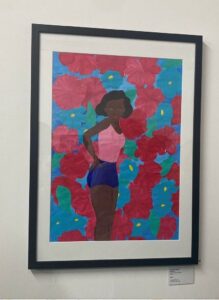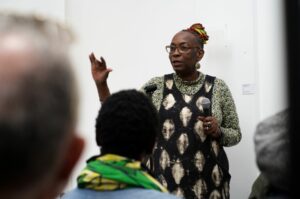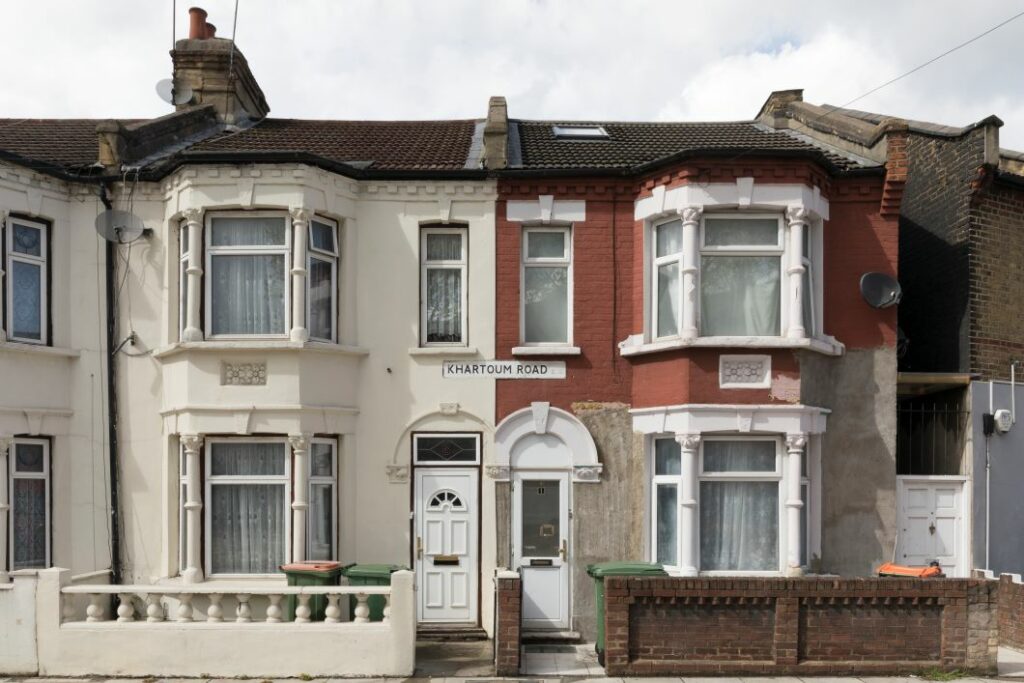“The exhibition made me feel even prouder of myself as a Black woman.”
To mark Black History Month, we explore how an exhibition funded by Creative Civic Change showcasing the work of Black artists is continuing to have an impact beyond the end of the programme’s funding.
When Vanessa Hiller was studying fine art at Chelsea College of Arts at the end of the 1990s, there were only two other Black girls on her course. The rest of the students were white, and they were taught a white curriculum. She doesn’t remember learning about one single Black artist.
It’s impossible to overestimate just how alienating and crushing this feels for a young person. “To be honest, it feels like you’re outside of the picture,” she explains. “You don’t believe there’s an end point where you get to be the person that’s making the art and having a big exhibition … You feel excluded.
“But do you know what’s really sad? I never knew I felt excluded. I just knew I didn’t feel good. Because so many had accepted it as normal.”
Stepping into power as a Black female artist
After leaving art school Vanessa went on to become a primary school teacher and became a mother to four children. She continued to paint, exhibiting her work when and where she could, but it wasn’t until she was in her 50s and the country was in lockdown due to the COVID-19 pandemic that she had the opportunity to really step into her power as a Black female artist.
Vanessa saw an advert on Instagram for a Creative Civic Change funded exhibition in St Leonards, East Sussex, asking for submissions by Black artists in response to the theme ‘playing the race card’. She entered a painting depicting a beautiful young Black woman against a vibrant background of turquoise and pink flowers.
“It was modelled off one of those 1950s pinup photos,” says Vanessa. “There’s been a long history of when you see a Black woman in those films she’s what, a prostitute? Or she’s dealing drugs. And it was claiming back her own beauty.”
The Playing the Race Card exhibition was the brainchild of Claudine Eccleston. Claudine has led an extraordinary life that has so far included everything from working as the first female plumber in London to being a foster carer for more than 40 children, and from running a whole food restaurant to being a landlady. Today she describes herself as a “Black pensioner, activist and creative”.
Claudine had the idea for the Playing the Race Card exhibition because she was “fed up with the response when I question something that was racist, to be told: ‘You’re just playing the race card.’” She shared her idea with a colleague, who introduced her to Katy Baird at Home Live Art, the local arts charity that was facilitating the Creative Civic Change project.
To her utter surprise, Katy offered her funding for it. “The idea that I could actually get money for this! I still can’t believe it to be honest,” she says.
Striking a chord in the community – and beyond
Initially conceived of during lockdown, the exhibition was launched online and had 31 entries – about a third of which were from the local community. The rest came from around the country and even as far afield as Africa.
But it didn’t stop there. It struck such a chord that the Creative Civic Change project went on to fund a physical exhibition, a workshop for young people and a panel discussion, all in October 2022.
Vanessa, whose piece was selected for the physical exhibition and was subsequently sold, spoke at the panel event. She talked about the racism she had encountered growing up; about being taught a white curriculum amongst predominantly white students at university; and about how it felt to grow up in a society where Black women are seen as “overtly sexy”.
Sharing her story at the exhibition in front of her artwork and the work of other inspirational Black creators changed Vanessa’s life.
“I feel really strongly that when you are in a creative space, you come into your own self. And it gives you power,” she explains. “So one thing that the exhibition did was make me feel even prouder of myself as a Black woman. It showed me that I had a voice.”
Vanessa’s husband, mother and father-in-law all witnessed her that day and came away saying they understood her in a way they never had before, meaning her relationships with these central people in her life have improved.
Her children also tell her they gained strength from what she did: “They said they didn’t always feel in the right environment to talk about being Black, and they said me doing my paintings of Black women had made them feel really proud and really strong.”
Since that day Vanessa has taken on a new role as a Deputy Special Educational Needs Coordinator in her school and has started renting an art studio – two things she would never have felt confident to do if it wasn’t for the exhibition.
“Everybody leaves me alone now in the family if I go to the art studio, no one makes a fuss about it, no one says you shouldn’t be spending money on your paint. It made people around me take me a little bit more seriously.”
Being seen and valued in the community
Back in St Leonards, Claudine’s work is not done. Though the Creative Civic Change funding has now ended, its legacy continues.
Not only will there be a new Playing the Race Card exhibition in 2024 – this time with the theme ‘Black joy’ – but they have been asked to take the project into a local secondary school. Added to this, the Playing the Race Card project manager Lorna Hamilton Brown went on to curate We Out Here, an exhibition at Hastings Contemporary featuring six local Black artists of Caribbean heritage.
Claudine feels the enduring impact of the project is that Black artists are now being seen and valued in the community.
“They did so much with that money. These sorts of projects that bring people together were missing … The amazing people that run Hastings Museum and Art Gallery, the De La Warr, Electro Studios, feel like partners, allies. They listen, they talk, they consult, it’s wonderful … It gave a foothold into the community of saying: ‘We are here. We are part of this community.’”
In the year that Black History Month’s theme is ‘Celebrating Our Sisters’, Claudine’s determination to create space for Black artists like Vanessa is a fantastic example of what happens when Black women are no longer made to feel excluded and are instead given the support to raise each other up.
As Vanessa so beautifully puts it: “Inclusion is not just being invited to the party. It’s being asked to dance.”
Featured image: Vanessa Hiller (South Coast Squared/Charles Osaji)
Painting by Vanessa Hiller
Claudine Eccleston (South Coast Squared/Charles Osaji)
Sarah Raymond is a writer and editor at Mile 91, supporting storytelling for people who do good things.



